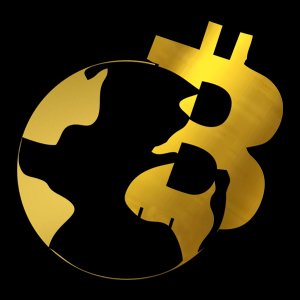DOGE Pump Ignites Altseason Hopes: Is a Massive Altcoin Rally Next?
Dogecoin ( DOGE ) is making waves once again. After a prolonged period of consolidation and a strong downtrend throughout early 2025, DOGE has officially broken out of its descending pattern. This bullish move is reminiscent of previous cycles where a DOGE breakout marked the beginning of an Altseason — a period when altcoins outperform Bitcoin and deliver explosive gains.
DOGE/USDT 1-day chart - TradingView via Bitget
On the weekly chart, DOGE has surged above critical resistance levels, signaling the start of renewed market interest and potential for further upside. If the momentum continues, analysts are eyeing price targets as high as $0.35 to $0.45 in the coming weeks.
Every time DOGE experienced a significant pump in the past, it was quickly followed by a surge across the altcoin market. This phenomenon is tied to increased speculative interest, improved market sentiment, and a flow of capital from large-cap coins like Bitcoin and Ethereum into smaller, high-risk, high-reward altcoins.
The latest chart of the Total2 market cap (Crypto Total Market Cap Excluding BTC ) mirrors DOGE’s breakout. Total2 has bounced strongly from its trendline support and is currently pushing toward the upper resistance band of its ascending channel. If this breakout holds, the altcoin market cap could surge toward the $1.7 to $1.9 trillion range, marking one of the biggest altcoin rallies since the bull market of 2021.
If this DOGE pump indeed triggers Altseason, here are some altcoins to keep a close eye on:
The charts don’t lie—DOGE is pumping, and the altcoin market is reacting positively. While nothing is guaranteed in crypto, historical patterns suggest that when Dogecoin leads the way, a flood of liquidity and speculation into altcoins is likely to follow.
If you’re considering jumping into the altcoin market, now might be the perfect time to prepare your portfolio for what could be the biggest Altseason since 2021.
Dogecoin ( DOGE ) is making waves once again. After a prolonged period of consolidation and a strong downtrend throughout early 2025, DOGE has officially broken out of its descending pattern. This bullish move is reminiscent of previous cycles where a DOGE breakout marked the beginning of an Altseason — a period when altcoins outperform Bitcoin and deliver explosive gains.
DOGE/USDT 1-day chart - TradingView via Bitget
On the weekly chart, DOGE has surged above critical resistance levels, signaling the start of renewed market interest and potential for further upside. If the momentum continues, analysts are eyeing price targets as high as $0.35 to $0.45 in the coming weeks.
Every time DOGE experienced a significant pump in the past, it was quickly followed by a surge across the altcoin market. This phenomenon is tied to increased speculative interest, improved market sentiment, and a flow of capital from large-cap coins like Bitcoin and Ethereum into smaller, high-risk, high-reward altcoins.
The latest chart of the Total2 market cap (Crypto Total Market Cap Excluding BTC ) mirrors DOGE’s breakout. Total2 has bounced strongly from its trendline support and is currently pushing toward the upper resistance band of its ascending channel. If this breakout holds, the altcoin market cap could surge toward the $1.7 to $1.9 trillion range, marking one of the biggest altcoin rallies since the bull market of 2021.
If this DOGE pump indeed triggers Altseason, here are some altcoins to keep a close eye on:
The charts don’t lie—DOGE is pumping, and the altcoin market is reacting positively. While nothing is guaranteed in crypto, historical patterns suggest that when Dogecoin leads the way, a flood of liquidity and speculation into altcoins is likely to follow.
If you’re considering jumping into the altcoin market, now might be the perfect time to prepare your portfolio for what could be the biggest Altseason since 2021.
SEC Brings BlackRock, Fidelity, and Nasdaq to the Table for Tokenization Roundtable
The U.S. SEC is set to hold a high-profile roundtable on asset tokenization on May 12, titled Tokenization: Moving Assets Onchain: Where TradFi and DeFi Meet. The event will feature major figures from traditional finance and the digital asset space.
Kicking off the session at 1 p.m. ET, SEC Chairman Paul S. Atkins will deliver a keynote speech addressing the regulatory and innovation dynamics of tokenization. His remarks will be followed by comments from Commissioners Caroline A. Crenshaw, Mark T. Uyeda, and Hester M. Peirce.
The event is part of the SEC’s Crypto Task Force initiative and will be open to the public via webcast. Walk-in attendance is also welcome at the venue, subject to security screening.
Related: SEC Crypto Task Force Web Portal Goes Live to Clarify Regulations
The first discussion panel, “Evolution of Finance: Capital Markets 2.0,” will run from 2 p.m. to 3:30 p.m. and be moderated by Jeff Dinwoodie (Cravath, Swaine & Moore LLP).
Participants include Cynthia Lo Bessette from Fidelity, Eun Ah Choi from Nasdaq, Will Geyer from Invesco, Sandy Kaul from Franklin Templeton, and Robert Mitchnick from BlackRock.
Other panelists include:
These leaders will explore how tokenization is reshaping market infrastructure and capital flows, with insights from firms actively deploying or piloting tokenized assets.
After a short break, the second session, “The Future of Tokenization,” will begin at 4 p.m. and run through 5:30 p.m., moderated by Tiffany Smith (WilmerHale). This session leans more into the crypto-native and legal perspectives, with speakers including:
The topics will range from legal frameworks and systemic risk to institutional adoption and decentralized finance (DeFi) innovation.
Ultimately, the participation of top executives from BlackRock, Fidelity, Franklin Templeton, Nasdaq, and Robinhood, among others, suggests strong institutional interest in shaping the regulatory narrative around tokenization.
Related: RWA Market Hits Record $240 Billion: The Tokenization of Everything?
With growing attention on real-world asset tokenization and blockchain-based capital markets, the SEC’s engagement may lead to updated policy frameworks.
Disclaimer: The information presented in this article is for informational and educational purposes only. The article does not constitute financial advice or advice of any kind. Coin Edition is not responsible for any losses incurred as a result of the utilization of content, products, or services mentioned. Readers are advised to exercise caution before taking any action related to the company.
Aevo Reignites Monthly AEVO Token Buybacks After AGP-2 Approval
Exciting news is circulating in the decentralized finance (DeFi) space! Aevo, a prominent decentralized derivatives exchange, has officially announced the resumption of its monthly on-chain buybacks for the AEVO token. This significant move comes directly after the successful approval of the AGP-2 proposal by the Aevo governance community. The announcement, made via the platform’s official X account, signals a renewed focus on supporting the AEVO token‘s value and aligning incentives within the ecosystem. For many token holders and observers of the decentralized exchange landscape, this development represents a positive step forward, promising potential benefits for the protocol’s long-term health and its native asset.
Before diving into the specifics of the buybacks, let’s quickly touch upon what Aevo is. Aevo is a high-performance decentralized derivatives exchange built on a custom Layer 2 Ethereum rollup. It specializes in options and perpetual contracts, offering traders a platform to speculate on the price movements of various cryptocurrencies without relying on centralized intermediaries. What sets Aevo apart is its hybrid approach: it combines an off-chain order book with on-chain settlement. This structure allows Aevo to offer the speed and efficiency typically found in centralized exchanges while maintaining the security and transparency inherent to blockchain technology. As a decentralized exchange, Aevo plays a crucial role in the evolving DeFi ecosystem, providing sophisticated trading instruments to a global user base. The success and growth of platforms like Aevo are vital indicators of the increasing maturity and capabilities of decentralized finance.
The decision to resume buybacks by a leading decentralized exchange like Aevo isn’t just technical news; it’s a strategic move that impacts market dynamics, investor sentiment, and the platform’s competitive positioning. In a crowded DeFi market, mechanisms that demonstrate a commitment to token value and ecosystem health are closely watched by users and investors alike.
So, what exactly are crypto buybacks? In the context of a cryptocurrency protocol like Aevo, a buyback involves the protocol using a portion of its revenue or treasury funds to purchase its native token (in this case, AEVO token) directly from the open market. Once purchased, these tokens are typically removed from circulation, either by sending them to a burn address (permanently destroying them) or by locking them in a treasury or staking contract for various purposes (like rewarding stakers or funding ecosystem initiatives). Aevo’s announcement specifies these will be monthly on-chain buybacks, meaning the purchases will occur transparently on the blockchain.
Protocols engage in crypto buybacks for several key reasons:
For the AEVO token, the resumption of monthly crypto buybacks directly ties the protocol’s operational success (generating revenue from trading fees) to the token’s economic model. This creates a more direct value accrual mechanism for token holders.
The catalyst for resuming the buybacks was the approval of the AGP-2 proposal. AGP stands for Aevo Governance Proposal. Decentralized protocols like Aevo empower their communities to make key decisions regarding the protocol’s operation, treasury management, and tokenomics through a governance process. This process typically involves:
The approval of the AGP-2 proposal signifies that the Aevo community, holding the majority of the governance power, has endorsed the strategy of using protocol resources for monthly token buybacks. This democratic decision-making process is a core tenet of decentralization and demonstrates community alignment on the desired token economic model for the AEVO token. Understanding the specifics of the AGP-2 proposal, such as the proposed source of funds (likely trading fees) and the exact mechanism for buybacks (e.g., a specific smart contract or treasury wallet), is key to fully appreciating its potential impact.
The resumption of monthly AEVO token buybacks carries several potential implications for the token and its holders:
Potential Benefits:
Considerations/Potential Challenges:
The impact on the AEVO token price will ultimately be a function of these buybacks combined with overall market sentiment, trading volume on Aevo, and broader macroeconomic factors. However, the buyback mechanism itself is a fundamentally positive addition to the token’s economic structure.
Aevo operates within a competitive landscape of decentralized exchange platforms, particularly those focusing on derivatives. Its hybrid model aims to capture users who demand both the performance of centralized exchanges and the trustless nature of DeFi. Other notable players exist, each with different architectures (e.g., pure on-chain order books, vAMM models). Aevo’s decision to implement robust tokenomics features like buybacks is partly a response to this competitive environment. Protocols are constantly innovating not just on trading technology but also on how their native tokens capture value and incentivize participation. By strengthening the utility and value accrual of the AEVO token through buybacks, Aevo aims to attract and retain users and investors, solidifying its position as a leading decentralized exchange for derivatives trading.
For individuals holding or considering investing in the AEVO token, the resumption of monthly buybacks is a key development to consider. It suggests a potentially more favorable supply/demand dynamic for the token moving forward. Investors might want to monitor the volume of tokens bought back each month and track Aevo’s revenue generation, as these factors underpin the sustainability and impact of the buyback program. While buybacks are a positive signal, it is crucial to remember that cryptocurrency markets are inherently volatile, and any investment decision should be based on thorough research and an understanding of the risks involved. This move by Aevo highlights the increasing sophistication of tokenomics within the decentralized exchange sector, providing tangible examples of how protocol success can translate into token value.
The announcement that Aevo will resume monthly on-chain buybacks for the AEVO token, following the successful approval of the AGP-2 proposal, marks a significant moment for the platform and its community. This decision, driven by community governance, reinforces the protocol’s commitment to creating value for its token holders by linking operational success to token economics through regular crypto buybacks. As a prominent decentralized exchange in the derivatives market, Aevo’s move is likely to be watched closely by other protocols and market participants. While the full impact will unfold over time, the resumption of buybacks is widely seen as a positive and strategic step, aiming to support the AEVO token‘s value and foster long-term confidence in the Aevo ecosystem.
To learn more about the latest crypto market trends, explore our article on key developments shaping the decentralized exchange landscape and tokenomics.
Disclaimer: The information provided is not trading advice, Bitcoinworld.co.in holds no liability for any investments made based on the information provided on this page. We strongly recommend independent research and/or consultation with a qualified professional before making any investment decisions.
El Salvador adds 8 Bitcoin to Reserves in past Week, defying IMF agreement
El Salvador has added eight Bitcoins to its national reserves this past week, pushing its total to over 6,173. BTC. The government continues its Bitcoin strategy despite strict conditions in a loan deal signed with the International Monetary Fund (IMF) in late 2024.
Currently, the country’s holdings are worth more than $641 million. The figures were reported by El Salvador’s Bitcoin Office, which monitors and announces the country’s Bitcoin purchases. President Nayib Bukele’s government wants to stay the course of its Bitcoin policy.
President Nayib Bukele is betting even bigger on Bitcoin. Even with international pushback and IMF advisories, he insists there will be no going back for the country’s Bitcoin strategy. On March 4, 2025, on X, he wrote:
No, it’s not stopping. If it didn’t stop when the world ostracized us and most ‘Bitcoiners’ abandoned us, it won’t stop now, and it won’t stop in the future.
President Nayib Bukele
The Bukele government has been buying at least one Bitcoin a day. This has been going on since late 2023 and has continued in abundance into 2025. There are days when the government purchases more than a single BTC, depending on market prices and how much money is available.
The buys are carried out via the Bitcoin Office, a special unit created to deal with crypto stuff for the government. This office is also in the habit of making routine media announcements and posting information regarding the government of El Salvador’s Bitcoin holdings through its website and social media.
In December 2024, El Salvador signed a $1.4 billion loan deal with the International Monetary Fund (IMF), whose public policy aims to stabilize the economy, encourage foreign investment, and reorganize national debt. But the offer was not without strings.
The country agreed to halt any voluntary public sector accumulation of Bitcoin as part of a technical memorandum of understanding. This included activities such as purchasing and mining BTC. However, the agreement clarified that Bitcoin obtained through forfeiture, seizure, custody, or similar legal actions against individuals or companies would be exempt from this restriction.
The memorandum of understanding further pointed out that the public sector included all hot and cold wallets under the governance of any government-owned entity. Some of the entities listed included the Chivo Wallet, La Agencia Administradora de Fondos Bitcoin, Comision Ejecutiva Hidroelectrica del Rio Lempa, and Oficina Nacional del Bitcoin.
El Salvador’s lawmakers responded in January 2025 with a 55 to 2 vote to repeal the Bitcoin legal tender law. The law was later reversed; Bitcoin was still legal in the country, but it was no longer compulsory to use in transactions.
Easing these strict regulations did not mean that the government stopped believing in the wonders of crypto. Bitcoin purchases continued, and by March 2025, the IMF reiterated its advice for El Salvador to stop buying the digital asset. But President Nayib Bukele resisted, rejecting the IMF’s request.
This defiance has frightened international economists and investors. El Salvador is opening itself to gratuitous financial risk, many believe. Even the IMF has cautioned that continued Bitcoin purchases with public money could make the country’s fiscal outlook more volatile.
El Salvador’s Bitcoin buying spree is not showing any signs of slowing. The Central American nation remains among the rare few actively acquiring Bitcoin through open market operations. Crypto industry leaders believe its national Bitcoin treasury approach could become a model for other countries exploring the idea of strategic Bitcoin reserves.
El Salvador is the only country in the world taking public money in real-time and daily to generate purchases in Bitcoin. Critics call the move risky, while its supporters say it is visionary.
Your crypto news deserves attention - KEY Difference Wire puts you on 250+ top sites
BTC USD Shoots Past $100K—Is This the Start of a New Bitcoin Rally?
The price of BTC USD surged by 8% over the past week, finally breaking through the highly anticipated $100,000 level. This move wasn’t just a random pump—it’s being hailed by many analysts as a strong bullish signal. The crypto community had been waiting for this breakout, and now that it’s happened, eyes are locked on whether Bitcoin can maintain this momentum.
BTC/USDT 1-day chart - TradingView via Bitget
However, not everyone is convinced. Some believe this could be yet another fakeout, a temporary surge before prices retrace back below key support zones.
Interestingly, while retail investors were celebrating the rise, several big whales had placed heavy short positions on BTC USD, betting against Bitcoin. But as the price soared past $100K, most of these positions were wiped out.
Massive liquidations hit the market, forcing whales to close their positions at a loss. This liquidation cascade added further momentum to the price increase, pushing Bitcoin even higher .
With Bitcoin now trading above $100,000, many experts believe a new all-time high (ATH) could be just around the corner . The key factor is whether Bitcoin can hold above this critical psychological and technical support zone.
According to top analysts, as long as prices remain above this level, the chances of a continued rally remain strong. In fact, companies are reportedly buying Bitcoin aggressively around current price levels, signaling strong institutional confidence in further upside potential.
The crypto markets are buzzing with excitement, but also a fair amount of caution. If Bitcoin maintains its position above $100K, we could soon witness a new ATH and possibly a sustained bull market.
However, traders should remain aware of potential pullbacks. For now, all eyes remain on BTC USD and whether it can stay above this crucial level in the coming days.
The price of BTC USD surged by 8% over the past week, finally breaking through the highly anticipated $100,000 level. This move wasn’t just a random pump—it’s being hailed by many analysts as a strong bullish signal. The crypto community had been waiting for this breakout, and now that it’s happened, eyes are locked on whether Bitcoin can maintain this momentum.
BTC/USDT 1-day chart - TradingView via Bitget
However, not everyone is convinced. Some believe this could be yet another fakeout, a temporary surge before prices retrace back below key support zones.
Interestingly, while retail investors were celebrating the rise, several big whales had placed heavy short positions on BTC USD, betting against Bitcoin. But as the price soared past $100K, most of these positions were wiped out.
Massive liquidations hit the market, forcing whales to close their positions at a loss. This liquidation cascade added further momentum to the price increase, pushing Bitcoin even higher .
With Bitcoin now trading above $100,000, many experts believe a new all-time high (ATH) could be just around the corner . The key factor is whether Bitcoin can hold above this critical psychological and technical support zone.
According to top analysts, as long as prices remain above this level, the chances of a continued rally remain strong. In fact, companies are reportedly buying Bitcoin aggressively around current price levels, signaling strong institutional confidence in further upside potential.
The crypto markets are buzzing with excitement, but also a fair amount of caution. If Bitcoin maintains its position above $100K, we could soon witness a new ATH and possibly a sustained bull market.
However, traders should remain aware of potential pullbacks. For now, all eyes remain on BTC USD and whether it can stay above this crucial level in the coming days.



 最低價
最低價 最高價
最高價 











































